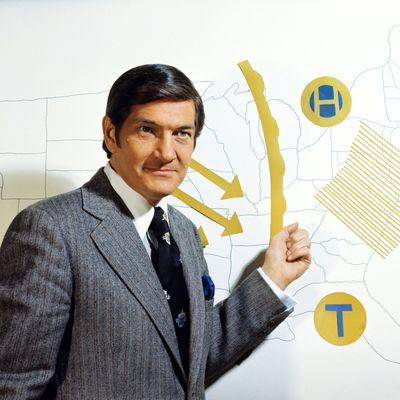
If you are a consumer of political news and analysis, you have likely run across various “forecasts” of what will happen in this election. It’s useful to sort them out.
One set of forecasts is based on political-science models, typically and sometimes exclusively focused on “fundamentals” like economic trends and incumbency. Some use early data for predictions that do not change during the general-election campaign, like the “Primary Model” of Stony Brook’s Helmut Norpoth, which gives Trump the edge for superior performance during the nomination contests. Others add in variable factors like presidential job approval and economic indicators; a good example is the “Political Economy Model” from Michael S. Lewis-Beck of the University of Iowa and Charles Tien of Hunter College, CUNY, which predicted a narrow Democratic win based on the numbers as they existed halfway through 2016. Still others are subject to change later in the general-election campaign, but most of these academic models place a lot less emphasis on polls than those used by journalists. Larry Sabato’s Crystal Ball offered a comprehensive list and analysis of the political-science forecasts in a series published earlier this year. It’s safe to say they generally point to a close presidential contest — sometimes closer than the polls.
The journalistic forecasts are mostly from either self-described data-journalism sites like FiveThirtyEight and the New York Times’ the Upshot, or from quasi-academic sites like Sam Wang’s Princeton Election Consortium that use similar data. They invariably summarize their findings in terms of win probabilities for the major candidates. At the moment, two forecasts that are based entirely on polls give Clinton her most robust probabilities: PEC is at 80 percent and the Upshot at 73 percent. A “polls-only” model from FiveThirtyEight has Clinton’s probability of winning at a significantly lower 60.5 percent. Why? As FiveThirtyEight’s Nate Silver has explained it, his polls-based forecast adjusts more rapidly to the most recent polls than the others do, and thus Trump’s stretch of very good polls last week had a notable impact (which could, of course, be misleading if it turns out those polls represent a temporary trend). Meanwhile, the Upshot more slowly incorporates new polling data, which makes for a more stable forecast, and also, at the moment, happens to boost Clinton’s probability number because of her long-standing lead.
There are additional journalistic forecasts that add non-polling data to the mix, most notably past election precedents. FiveThirtyEight has a “polls-plus” forecast that varies a bit from the polls-only figure (though it is currently almost identical). Daily Kos rates Clinton as a 64 percent favorite at present.
All these journalistic forecasts define a “win” quite literally as 270 electoral votes, so state as well as national polling is factored in, though most of the analysts downplay the likelihood of a split decision between the popular vote and the electoral vote (FiveThirtyEight recently gave Trump a non-negligible but still not very likely 6 percent chance of repeating George W. Bush’s feat of winning the White House while losing the national popular vote, presumably without Supreme Court intervention this time).
Beyond the academic and journalistic forecasts, of course, there are prediction “markets” based on tangible election bets. The PredictWise site offers a good snapshot of betting markets — and also state-by-state comparisons of what the markets as compared to the polls and the “fundamentals” might indicate — which now give Clinton a 72 percent probability of winning.
So whom should the discerning political junkie trust? That’s hard to say. It’s tempting to rely on the betting markets since presumably the gamblers have predigested all the other data. For the truly cautious, there is even a forecasting average, called PollyVote, that lumps together all kinds of forecasts. All these estimates (other than the more unchanging of the “fundamentals” models) may well begin to converge as we get closer to Election Day. All the models that rely on polling averages should settle down as the data massively accumulates in late October. But if the race is very close, we could see split predictions at the last minute, and then it could be a matter of the tiniest thumb on the scales making a crucial difference. Ultimately, as one election forecaster from the distant past, Kenny Rogers, put it: “There’ll be time enough for counting when the dealing’s done.”






























